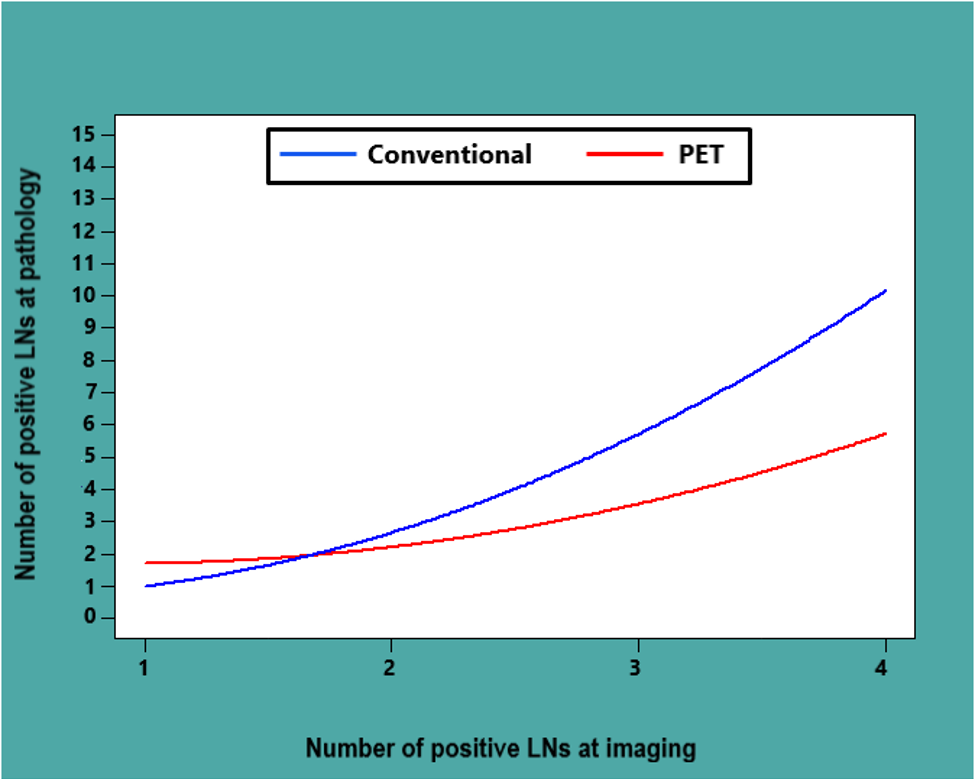The authors of this study performed an analysis of 346 PCa patients with evidence of cN1 disease on conventional imaging (n=283; 81.8%) vs. choline or PSMA PET/CT (n=63; 18.2%). All patients underwent RP and PLND. Lowess analyses explored the non-linear relationship between the number of positive spots and the number of pathologically positive nodes according to the imaging technique (cross-sectional vs. PET/CT). Kaplan-Meier analyses assessed time to biochemical recurrence (BCR) in the PET/CT cohort after stratifying patients according to the number of positive lymph nodes. They then assessed for the best cut-off for the number of LNs at PET/CT to predict BCR.
The median PSA was 15 and 10 ng/ml for CT/MRI and PET/CT, respectively (P=0.04). The rate of pN1 disease (74 vs. 69%), the number of nodes removed (25 vs. 24), and of positive nodes (2 vs. 2) at LND did not differ (all P≥0.2). The site of clinical LN was the pelvis only and the pelvis ± retroperitoneum in 84 vs. 88% and 16 vs. 12% patients (P=0.3). While cross-sectional imaging was associated with underestimation of nodal burden when ≥2 LNs were detected, PET/CT was characterized by excellent concordance with the number of positive nodes at RP.
Full demographics and additional correlations are shown below:
Median follow-up was 70 months and 183 patients experienced BCR. When focusing on PET/CT, the most informative cut-off predicting BCR was 2 clinically positive nodes. When patients selected based on PET/CT were stratified according to the number of positive spots (1 vs. ≥2), the 3-year BCR-free survival rates were 48 vs. 21% (P=0.03). This was consistent with what was observed when stratifying patients according to the number of positive nodes at final pathology (41 vs. 23%; P=0.04).
This correlation between the number of positive spots and BCR is seen below:
The curve correlating cN vs pN status is seen below:
Ultimately, they conclude that while conventional imaging underestimates the nodal burden, PET/CT is characterized by excellent concordance with final pathology. This resulted in a more reliable prediction of BCR, where the presence of ≥2 positive spots at PET/CT might identify men more likely to experience early recurrence.
Presented By: Giorgio Gandaglia, MD, FEBU, Department of Urology, San Raffaele Hospital, Milan, Italy
Written By: Thenappan (Thenu) Chandrasekar, MD – Urologic Oncologist, Assistant Professor of Urology, Sidney Kimmel Cancer Center, Thomas Jefferson University, @tchandra_uromd on Twitter during the 2021 European Association of Urology, EAU 2021- Virtual Meeting, July 8-12, 2021.


